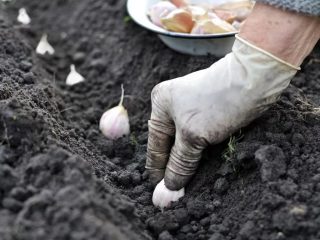Content
When growing any crops in the Urals, it is important to take into account the climate, as well as the breeding nuances of the variety of the planted vegetable. You can get a healthy harvest only if you plant and dig up the crop on time.
The diet of many peoples around the world includes garlic. In Russia, it is difficult to imagine many dishes without it. This vegetable can also be grown in the Urals, however, in this case, preference is given to the spring variety, which grows quickly and is well stored until the next harvest. Although many gardeners still plant winter garlic. This article will talk about When is winter garlic harvested? in the Urals, but first we will determine the period of maturation of this crop.
Garlic ripening period in the Urals
Taking into account the Ural climatic features, winter varieties of garlic ripen in the last ten days of July, and spring varieties - in mid-August - early September. The formation of denticles takes place in the summer. In dry seasons, the cloves will be small and shriveled, and rainy summers promote the growth of large heads. But too much moisture also negatively affects the crop; it can simply rot in the ground.
Winter varieties of garlic, as a rule, are harvested 100 days after germination, and spring varieties - two to three weeks later.But in addition to climatic conditions, which have a great influence on the ripening period of the crop, it is also important to take into account the characteristics of the variety. For example, the Alcor variety was developed, which ripens in 94 days. It is, among other things, resistant to diseases, fungi and yellow dwarf virus. The Novosibirsk variety has an even shorter ripening period - 85 days. Delayed ripening of the variety can be caused by a lack of microelements in the soil and diseases. Therefore, you should not rely only on acquired knowledge; it is necessary to monitor the condition of the vegetable throughout the entire period of its growth.
The following varieties of garlic are also suitable for cultivation in the Ural region:
- "Skif" - reproduces by aerial heads and cloves. Resistant to white rot and bacteriosis. It has a lilac shade of scales.
- “Bashkirsky 85” - ripens in 85–90 days. The color of the scales is white with a light purple tint. Resistant to downy mildew, onion flour and bacterial rot.
- “Gradekovsky” is an early ripening winter variety of garlic. The ripening period is 81–86 days. The scales and teeth have a white-lilac tint.
Definition of maturity
Gardeners determine the maturity of garlic in several ways:
- The soil around the bulbs is carefully raked and the husks are inspected. If it is untouched and dense, then it’s time to remove the garlic from the garden.
- Yellowed and withered leaves, flat feathers and a soft neck of the false stem are clear signs of maturity of garlic heads.
- Cracked inflorescences and a hard head of garlic, easily peeled off husks are also sure signs of ripening of the crop.
As in the case of onions, systematic watering of the beds should be stopped 2-3 weeks before harvesting. So, you can protect the garlic heads from the active development of fungal microflora. In addition, in this case, rotting of the crop in the ground can be avoided.
The arrows should be removed, and the garlic feathers that are beginning to turn yellow should be tied in a knot. Thus, nutrients will be directed to the root system, and the green mass will not grow.
Digging up garlic
If your garlic is already ripe, choose a nice day to harvest it. If you harvest garlic bulbs in wet weather, they will take longer to dry and will have a shorter shelf life.
The root system of the vegetable is quite developed, so it is almost impossible to pull it out with your hands. You can remove it from the soil by digging it up with a shovel. If there are clods of earth stuck to the head, they need to be shaken. Then you need to dry the winter garlic harvest well.
So, after drying, you can tie them into bundles or braid them into garlic braids and hang them in a dry, dark room for permanent storage. Such bundles can even become an element of your kitchen decor.
How to dry and preserve garlic
If the weather outside is sunny, then the first stage of drying can be carried out in the beds, leaving the garlic heads in the sun for 1 day. After this, the garlic should be laid out in a thin layer under a canopy or in the attic so that it is no longer exposed to sunlight. It will take approximately 14 days to dry completely.
If you plan to store garlic in boxes, then after drying you can cut off the tops. This way, the garlic heads will be stored better. Then you need to cut off the roots with a sharp knife or pruning shears.To prevent spoilage of the product, the bottom of the garlic must be scorched or sealed with wax. However, it is best stored in bundles, since air penetrates into it from all sides, which prevents rotting.
Winter garlic also stores well in closets if the temperature in them does not rise above a few degrees. If the storage is provided with proper ventilation and temperature, it will last without losing its beneficial properties until the new harvest.
Garlic is grown everywhere in Russia, as it is included in the daily diet of citizens. As you can see, it is important for a summer resident not only to plant the crop in a timely manner and care for it, but also to remove the heads of garlic from the soil on time and correctly. Paying close attention to the beds will allow you to reap a rich harvest even in the harsh conditions of the Urals.
We invite you to watch a video about how and when to harvest garlic heads:















